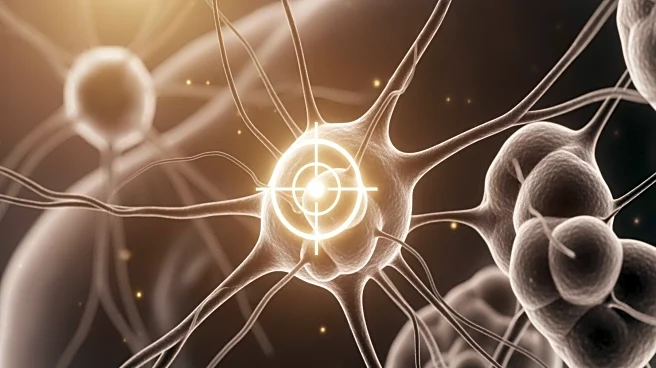What's Happening?
Researchers from the Icahn School of Medicine at Mount Sinai, along with international collaborators, have discovered a unique group of microglia that may protect the brain from Alzheimer's disease. These
microglia exhibit lower levels of the transcription factor PU.1 and higher expression of the receptor CD28, which helps reduce brain inflammation and slow the accumulation of amyloid plaques and toxic tau proteins. The study, published in Nature, utilized mouse models and human brain cells to demonstrate that these protective microglia suppress inflammation and preserve memory. The findings suggest that microglia can act as protectors rather than contributors to brain damage in Alzheimer's disease.
Why It's Important?
This discovery is significant as it opens new avenues for Alzheimer's treatment strategies focused on enhancing the protective role of microglia. By understanding the molecular framework of PU.1 and CD28, researchers can develop immunotherapeutic approaches to alter the disease's progression. The study highlights the potential for immune-based therapies to target microglial activity, offering hope for slowing or preventing Alzheimer's. This could have profound implications for millions affected by the disease, potentially reducing healthcare costs and improving quality of life for patients and caregivers.
What's Next?
The research team plans to further explore the mechanisms by which microglia can be manipulated to protect the brain. Future studies may focus on developing drugs that enhance the protective functions of microglia or inhibit their destructive roles. Additionally, clinical trials could be initiated to test the efficacy of immunotherapy in Alzheimer's patients. The findings also encourage continued international collaboration to advance scientific understanding and treatment of neurodegenerative diseases.
Beyond the Headlines
The study underscores the importance of genetic research in understanding disease risk factors. The identification of a genetic variant linked to lower Alzheimer's risk provides a mechanistic explanation for the protective role of microglia. This research also highlights the shared logic of immune regulation across different cell types, suggesting broader applications for immunotherapy beyond Alzheimer's.











